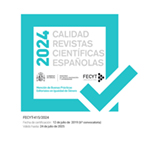Community based bioremediation: grassroots responses to urban soil contamination
Scott Kellogg
Reviewer A:
Please, comment on the most relevant aspects (positive points and areas to improve) of the reviewed article.
A clear and technically deep argument about bioremediation approaches that can be framed as generative justice. Well supported and compelling.
Would you suggest any changes or make any recommendations to improve the quality of the article?
-
Recommendation: Accept.
Reviewer B:
Please, comment on the most relevant aspects (positive points and areas to improve) of the reviewed article.
The topic is very important.
Would you suggest any changes or make any recommendations to improve the quality of the article?
We suggest the article be re-written, critically considering the feasibility of remediation, and critically interrogating the groups covered in the case studies. Please see attached review.
Recommendation: Reject.
Reviewer C:
Please, comment on the most relevant aspects (positive points and areas to improve) of the reviewed article.
The article carefully and clearly introduces the problem of post-industrial urban soils and the promises of community based bioremediation. The article demonstrates a remarkably clear and politically well informed perspective. The author is able to offer new perspectives that are accessible to an non-expert. Overall his or her writing is clear and at times elegant.
In particular, the link between bioremediation and generative justice approaches offers a new perspective and deserves more development. The theoretical considerations should be extended. The same is true for the paragraph on risk as 'disciplinary' practice that needs more development or should be left out as the reader might loose a sense of the overall argument.
Another problem with the case studies seems to be that they are not executed in predominantly urban areas. This needs addressing. What can be learnt from rural case studies and where are their limitations for urban environments?
Would you suggest any changes or make any recommendations to improve the quality of the article?
Overall the article should synchronize its different subsections in a better manner. Unfortunately, the section on bioremediation techniques and section on different case studies are insufficiently connected with the rest of the article. A re-worked version would use the case studies to explain the theoretical considerations and advance them. The same is true for the conclusive remarks that seem incomplete.
Apart from that the author should carefully revise his or her references. The existing references are not sufficient and often it does not become clear, which ideas are referred to. In particular, the case study section lacks referencing. The reader gets no idea how the author has acquired the information.
Unfortunately, neither photos nor graphics have been included. Particularly, for the sections on case studies and on the different methods of bioremediation illustrations would be useful.
Recommendation: Revisions requiredt.
The text included important modifications before publication












